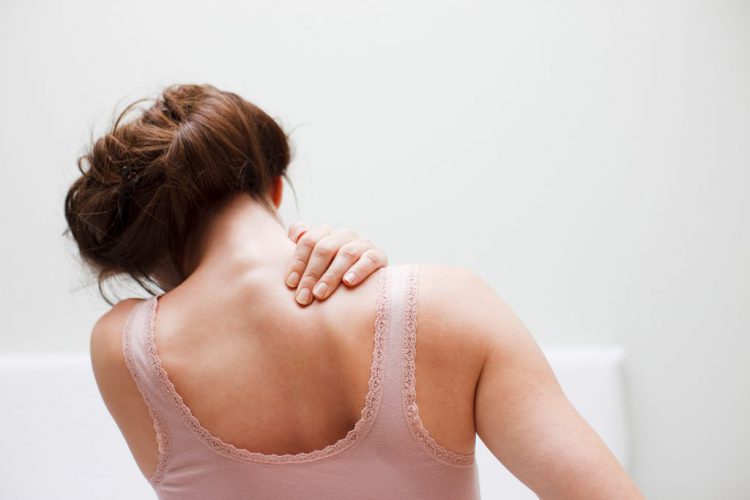
An acromioclavicular sprain

Repetitive movements of the arm can cause a batch of problems from overuse. Direct trauma to the shoulder is another story. It can cause a collarbone fracture, or a strain of the acromioclavicular joint. The latter represents 12% of shoulder dislocation cases.
Anatomy
The shoulder is made up of the humeral head (bone of the arm) which overlaps with the scapula, with the whole joint surrounded by a capsule. The scapula (the acromial portion) rejoins the collarbone above the shoulder, which is where the name of the joint comes from: the acromioclavicular. A few ligaments also connect this joint
Causes
This type of trauma is often caused by direct trauma to the side of the shoulder or of the elbow, or to the arm during full extension (falling on the buttocks with the arms protecting you from behind). It is therefore frequent to see this type of injury during contact sports or activities with a high risk of falling at high speed, such as mountain or road biking or snowboarding. A fall on ice or on stairs, as banal as it may seem, can also be the cause of this type of sprain.
Description of the injury and clinical presentation
An acromioclavicular sprain mainly involves the ligament structures and includes varying degreess of severity:
1st degree : Ligament strain
2nd degree : Partial ligament tear with slight muscle involvement (trapezius and deltoid)
3rd degree : Complete ligament tear with off-center joint and major muscle injury.
Often, the patient presents with a specific traumatic history. The pain is very localized and without deformity. Movements that raise the shoulder and cross the arms in front of the chest are the most painful. The patient is usually given relief by supporting the shoulder with a sling, with an arm support (chair) or simply with the assistance of the other arm.
Treatments
Treatment varies according to the degree of the injury It is first important to address pain and inflammation. Immobilization with taping or a brace may be required depending on the sprain. Ultrasound can simultaneously reduce inflammation and aid in healing. Often, friction at the ligament level can help reduce scar tissue and encourage adequate healing of fibers. Interventions at the trapezius, deltoid, and scapula are useful for loosening and for muscle healing.
Reinforcement and mobility exercises are also important, once pain and inflammation are well-controlled. Recovery can take several weeks depending on the degree and collateral muscular damage (such as rotator cuff tears). Surgery is very rare. The benefits versus the drawbacks of surgery must be seriously considered.
For questions or to make an appointment with one of our physical therapists, contact us.


